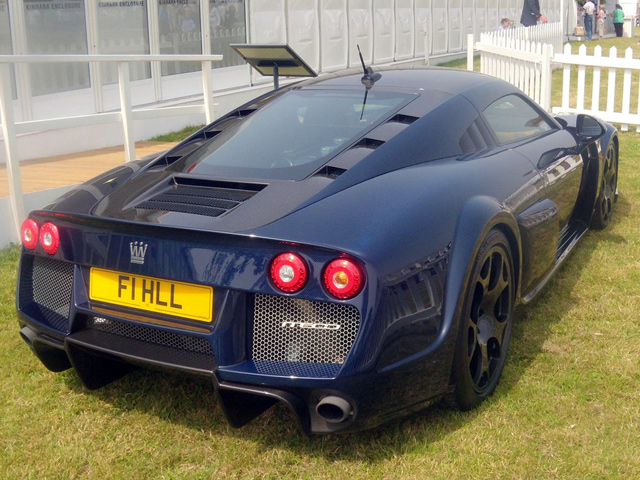There's no use in standing in the way of progress, especially when it comes to supercars. These days they're all going hybrid, all-wheel-drive and dual-clutch, to the benefit of performance. But like many purists, we can't help but lament the disappearance of the purists driver's car. Here we've gathered some of the last great supercars to ditch the digital and stick to the analog, with good old-fashioned rear-wheel-drive, internal-combustion engines and three-pedal gearboxes.
We begin with the Noble M600, a beast of a supercar in every sense that will satisfy any purist. And it comes from the UK. It doesn't drive like the typical Ferrari simply because it doesn't have modern amenities like ABS and stability management. Power comes from a mid-mounted 4.4-liter twin-turbo V8 with 650 horsepower and mated to a six-speed manual. It can hit 100 km/h in under 3 seconds and has a top speed of 362 km/h. Traction control is standard, but can easily be turned off via a button that's covered by the same flap used in a Tornado fighter jet. With a carbon fiber body, production is limited and it should only be driven by those who can handle it.


The Pagani Zonda needs little to no introduction. First launched in 2000, the Zonda was Horacio Pagani's first supercar. Over the course of its production run, it went through a number of modifications focusing mainly on increasing its output. The final versions were powered by an AMG-built V12 with upwards of 700 horsepower. Like the M600, the Zonda retains the classic supercar setup: mid-engine, rear-wheel drive and a manual transmission. The Zonda's replacement, the Huayra, has ditched the manual in favor of a sequential transmission. In other words, even Pagani is adapting to the times. Thankfully the mid/rear layout remains.


Despite a lineup that's focused mainly on all-wheel-drive and sequential gearboxes, there remains one last purist holdout at Lamborghini: the Gallardo 550-2. This mid-engined machine is meant for those who are adamant about retaining supercar purity. Mated to a six-speed manual transmission, the mid-mounted 5.2-liter V10 produces 542 horsepower. Unlike its all-wheel-drive Gallardo counterparts, the 550-2 is the true enthusiast driver's car. With the Gallardo soon to be replaced, it's unknown whether Lamborghini will offer its successor with the RWD-manual tranny setup. If not, the 550-2 will be the end of an era for Lamborghini.


The Venom GT is simply like no other. Starting with a Lotus Exige chassis, Texas-based Hennessey Performance has turned it into a true purist supercar in every sense. Power comes courtesy of a 7.0-liter twin-turbo V8 that produces more than 1,500 horsepower. Although buyers can opt for a seven-speed sequential transmission, the enthusiast's choice is the standard six-speed manual. Company founder and owner John Hennessey continues to update and improve the Venom GT, especially in light of fresh competition coming from McLaren and Ferrari. But neither of those two will likely offer a manual, further making the Venom GT even more special.


If the Porsche 911 Turbo isn't good for you, then the 911 GT2 RS may just fit the bill. This ultra-high-performance machine is the most powerful production sports car in Porsche's history. It recorded a top speed of 330 km/h and will blast its way to 100 km/h in only 3.4 seconds. This is thanks to its 3.6-liter biturbo flat-six that generates a total of 612 horsepower. Mated to a manual gearbox that sends all that power to the rear wheels, it lapped the Nurburgring in a staggering 7:18 minutes. Just 500 units were made back in 2010, and we'll have to wait and see whether the current 991 generation 911 will spawn a new GT2 RS at some point in its lifetime.


Related News



